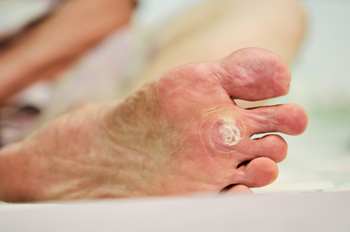 If you should develop a plantar wart, you may often be aware of the pain and discomfort that is associated with it. They are typically common warts, and form on the heel of the foot. The pain may be at it’s worse in the morning after rising, and may often feel like pieces of glass that have lodged in your heel. Research has shown that plantar warts originate from the human papillomavirus, and often lives and thrives in warm and moist places that may include locker and shower room floors, pools, and surrounding areas. It can typically enter the body thru small cracks in the sole of the foot and prevention of this virus may be accomplished by wearing appropriate shoes, while in these areas. There are several noticeable symptoms associated with this ailment, including a small and hardened round area appearing on the heel of the foot, possibly with black dots occupying the center. If you have developed a plantar wart, it’s suggested to seek counsel from a podiatrist as quickly as possible to begin the best course of treatment.
If you should develop a plantar wart, you may often be aware of the pain and discomfort that is associated with it. They are typically common warts, and form on the heel of the foot. The pain may be at it’s worse in the morning after rising, and may often feel like pieces of glass that have lodged in your heel. Research has shown that plantar warts originate from the human papillomavirus, and often lives and thrives in warm and moist places that may include locker and shower room floors, pools, and surrounding areas. It can typically enter the body thru small cracks in the sole of the foot and prevention of this virus may be accomplished by wearing appropriate shoes, while in these areas. There are several noticeable symptoms associated with this ailment, including a small and hardened round area appearing on the heel of the foot, possibly with black dots occupying the center. If you have developed a plantar wart, it’s suggested to seek counsel from a podiatrist as quickly as possible to begin the best course of treatment.
Plantar warts can be very uncomfortable. If you need your feet checked, contact one of our podiatrists from Lovely Foot Associates, PC. Our doctors will assist you with all of your foot and ankle needs.
About Plantar Warts
Plantar warts are the result of HPV, or human papillomavirus, getting into open wounds on the feet. They are mostly found on the heels or balls of the feet.
While plantar warts are generally harmless, those experiencing excessive pain or those suffering from diabetes or a compromised immune system require immediate medical care. Plantar warts are easily diagnosed, usually through scraping off a bit of rough skin or by getting a biopsy.
Symptoms
Treatment
To help prevent developing plantar warts, avoid walking barefoot over abrasive surfaces that can cause cuts or wounds for HPV to get into. Avoiding direct contact with other warts, as well as not picking or rubbing existing warts, can help prevent the further spread of plantar warts. However, if you think you have developed plantar warts, speak to your podiatrist. He or she can diagnose the warts on your feet and recommend the appropriate treatment options.
If you have any questions please feel free to contact our office located in Johnstown, PA . We offer the newest diagnostic and treatment technologies for all your foot and ankle needs.
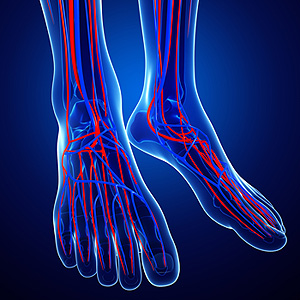 Varicose veins are a common problem for women across the world. The biggest risk factor for developing this condition is heredity. Surprisingly, over 80% of people who have varicose veins have them because of genetics. If you are looking for ways to reduce your risk of getting varicose veins, you should start by making lifestyle modifications. Maintaining an optimal weight, avoiding a sedentary lifestyle, and avoiding wearing tight clothes and heels are all ways you can reduce your risk of developing the disease. Although people consider this condition to be a cosmetic problem, it can also cause you to feel symptoms such as heaviness, pain, itching, swelling, burning, numbness, and cramps. If you have varicose veins in your lower extremities, such as the foot, you should consult with your podiatrist.
Varicose veins are a common problem for women across the world. The biggest risk factor for developing this condition is heredity. Surprisingly, over 80% of people who have varicose veins have them because of genetics. If you are looking for ways to reduce your risk of getting varicose veins, you should start by making lifestyle modifications. Maintaining an optimal weight, avoiding a sedentary lifestyle, and avoiding wearing tight clothes and heels are all ways you can reduce your risk of developing the disease. Although people consider this condition to be a cosmetic problem, it can also cause you to feel symptoms such as heaviness, pain, itching, swelling, burning, numbness, and cramps. If you have varicose veins in your lower extremities, such as the foot, you should consult with your podiatrist.
Vascular testing plays an important part in diagnosing disease like peripheral artery disease. If you have symptoms of peripheral artery disease, or diabetes, consult with one of our podiatrists from Lovely Foot Associates, PC. Our doctors will assess your condition and provide you with quality foot and ankle treatment.
What Is Vascular Testing?
Vascular testing checks for how well blood circulation is in the veins and arteries. This is most often done to determine and treat a patient for peripheral artery disease (PAD), stroke, and aneurysms. Podiatrists utilize vascular testing when a patient has symptoms of PAD or if they believe they might. If a patient has diabetes, a podiatrist may determine a vascular test to be prudent to check for poor blood circulation.
How Is it Conducted?
Most forms of vascular testing are non-invasive. Podiatrists will first conduct a visual inspection for any wounds, discoloration, and any abnormal signs prior to a vascular test.
The most common tests include:
These tests are safe, painless, and easy to do. Once finished, the podiatrist can then provide a diagnosis and the best course for treatment.
If you have any questions, please feel free to contact our office located in Johnstown, PA . We offer the newest diagnostic and treatment technologies for all your foot care needs.
Read more about Vascular Testing in Podiatry
 A form of therapy that is referred to as extracorporeal shock wave therapy, which is also known as ESWT, may possibly aid in helping patients with pain associated with tendons. People who experience plantar fasciitis may benefit from this type of treatment. It may promote healing and this may reduce some of the pain and discomfort that is typically associated with this condition. There are generally two forms of this type of treatment. One is referred to as a high-energy shock wave treatment, often including the therapy to be performed in one session. Some patients experience severe pain if this procedure is chosen, and may be administered anesthesia. Low-energy shock wave treatments may consist of being given in three or more sessions and typically causes mild or no pain. If you are experiencing tendon ailments, please speak with a podiatrist if you would like information about shock wave therapy.
A form of therapy that is referred to as extracorporeal shock wave therapy, which is also known as ESWT, may possibly aid in helping patients with pain associated with tendons. People who experience plantar fasciitis may benefit from this type of treatment. It may promote healing and this may reduce some of the pain and discomfort that is typically associated with this condition. There are generally two forms of this type of treatment. One is referred to as a high-energy shock wave treatment, often including the therapy to be performed in one session. Some patients experience severe pain if this procedure is chosen, and may be administered anesthesia. Low-energy shock wave treatments may consist of being given in three or more sessions and typically causes mild or no pain. If you are experiencing tendon ailments, please speak with a podiatrist if you would like information about shock wave therapy.
Shockwave therapy is a treatment commonly used to treat various injuries and conditions, particularly plantar fasciitis in the feet. To learn more, consult with one of our podiatrists from Lovely Foot Associates, PC. Our doctors can provide the care you need to keep you pain-free and on your feet.
Shockwave Therapy
Shockwave therapy is a new treatment option designed to treat bone conditions such as tennis elbow, shoulder pain, and others. Shockwave therapy uses high intensity sound waves that are directed to the affected tissues of the body with pinpoint accuracy. The effects are very beneficial, leading to a production of collagen fibers, eliminating inflammation.
Who Benefits from Shockwave?
Shockwave is recommended for patients suffering from heel pain and associated problems. Heel pain is a common condition which can be caused by obesity, overexertion, and spending a substantial amount of time on hard floors with your feet exposed and unsupported.
Fast and Easy
The therapy is actually a simple process that can leave patients feeling better the very next day. Shockwave therapy is not as dramatic as it sounds. It enables more blood flow to effected areas, addressing the source of the problem and allowing treatment to last for a long time.
Treatment & Recovery Time
Shockwave treatment will enable your feet to recover quickly. This is especially important since surgery is not required. It is cost effective and does not require the use of anesthesia. This treatment is a better option to surgery, since it is proven safe.
If you have any questions, please feel free to contact our office located in Johnstown, PA . We offer the newest diagnostic and treatment technologies for all your foot and ankle needs.
Read more about Treating Heel Pain with Shockwave Therapy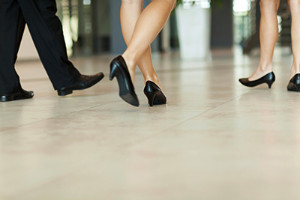 The feet and overall health of the body will benefit by performing daily foot care and this is especially true if you stand or walk for the majority of the day. Many jobs require standing for extended periods of time, and this may typically affect the general condition of the feet. Choosing to wear comfortable shoes may be beneficial to achieve maximum comfort in addition to maintaining a healthy weight, which may reduce pressure on the feet. Research has shown the importance of performing mild foot and ankle stretches throughout the day and this may prevent uncomfortable foot pain. When the work day has ended, it’s advised to wash and dry the feet thoroughly followed by utilizing a good moisturizing cream, which may prevent cracked heels. Please speak with a podiatrist for additional information on how to properly take care of your feet.
The feet and overall health of the body will benefit by performing daily foot care and this is especially true if you stand or walk for the majority of the day. Many jobs require standing for extended periods of time, and this may typically affect the general condition of the feet. Choosing to wear comfortable shoes may be beneficial to achieve maximum comfort in addition to maintaining a healthy weight, which may reduce pressure on the feet. Research has shown the importance of performing mild foot and ankle stretches throughout the day and this may prevent uncomfortable foot pain. When the work day has ended, it’s advised to wash and dry the feet thoroughly followed by utilizing a good moisturizing cream, which may prevent cracked heels. Please speak with a podiatrist for additional information on how to properly take care of your feet.
While working on the feet, it is important to take the proper care of them. For more information about working on your feet, contact one of our podiatrists from Lovely Foot Associates, PC. Our doctors will treat your foot and ankle needs.
Working on Your Feet
Standing on your feet for long periods of time can cause stress and pain in your feet. Your whole body may experience change in terms of posture, back pain, bunions, callouses and or plantar warts. There are ways to avoid these conditions with proper foot care, smart choices and correct posture.
Positive Changes
Negative heeled shoe – Choosing this shoe type places the heel slightly lower than the ball of the foot. These are great for overall foot health. Find shoes that fit you correctly.
Go barefoot – Our feet were not designed to be enclosed for all hours of the day. Try to periodically expose your feet to air.
Eliminate Pain
Foot Exercises – Performing simple exercises, incorporating yoga and doing stretches are beneficial. This will allow increased blood flow to the area and muscles of the foot.
Achilles tendon – Stretching the foot out flat on the floor will relax the calf muscles and tendon. These exercises can be performed almost anywhere. Make sure you add these exercises to your daily regimen.
With a little bit of this information and knowing more about foot health, you will notice changes. Foot stretches and proper footwear will help with pain and prevent further issues.
If you have any questions please feel free to contact our office located in Johnstown, PA . We offer the newest diagnostic and treatment technologies for all your foot and ankle needs.
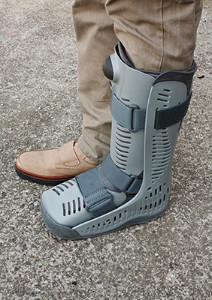 If you have ever experienced a broken ankle, you are most likely familiar with the severe pain and discomfort that is often associated with it. It may be difficult to differentiate between a fracture and a sprain due to the fact that most symptoms may be similar. These may include bruising, swelling, and the inability to walk because of the pressure the ankle must endure. For severely broken ankles, the bone may protrude from the skin and prompt treatment is recommended. An X-ray is typically performed to confirm if the ankle is broken or sprained. It’s suggested to consult with a podiatrist who can examine the broken ankle and discuss proper treatment options.
If you have ever experienced a broken ankle, you are most likely familiar with the severe pain and discomfort that is often associated with it. It may be difficult to differentiate between a fracture and a sprain due to the fact that most symptoms may be similar. These may include bruising, swelling, and the inability to walk because of the pressure the ankle must endure. For severely broken ankles, the bone may protrude from the skin and prompt treatment is recommended. An X-ray is typically performed to confirm if the ankle is broken or sprained. It’s suggested to consult with a podiatrist who can examine the broken ankle and discuss proper treatment options.
Broken ankles need immediate treatment. If you are seeking treatment, contact one of our podiatrists from Lovely Foot Associates, PC. Our doctors can provide the care you need to keep you pain-free and on your feet.
Broken Ankles
A broken ankle is experienced when a person fractures their tibia or fibula in the lower leg and ankle area. Both of these bones are attached at the bottom of the leg and combine to form what we know to be our ankle.
When a physician is referring to a break of the ankle, he or she is usually referring to a break in the area where the tibia and fibula are joined to create our ankle joint. Ankles are more prone to fractures because the ankle is an area that suffers a lot of pressure and stress. There are some obvious signs when a person experiences a fractured ankle, and the following symptoms may be present.
Symptoms of a Fractured Ankle
If you suspect an ankle fracture, it is recommended to seek treatment as soon as possible. The sooner you have your podiatrist diagnose the fracture, the quicker you’ll be on the way towards recovery.
If you have any questions, please feel free to contact our office located in Johnstown, PA . We offer the newest diagnostic and treatment technologies for all your foot care needs.
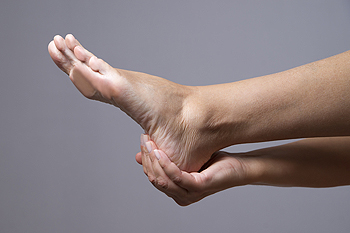 The majority of warts can be unsightly and painful, and a plantar wart is no exception. This type of wart develops on the heel of the foot and will grow inward as a result of the pressure the feet endures on a daily basis. It is known to be caused by the human papillomavirus, which is also referred to as HPV, and may be more prevalent in children and people who have compromised immune systems. This contagious virus can be transmitted by direct contact with a person who may carry the germ or from an object that may have been contaminated. Some of the symptoms that might be associated with plantar warts may include a small area that may be rough in texture on the heel of the foot. Additionally, there may be tiny black dots in the center of the wart, and you may experience pain while walking or standing. If you are afflicted with plantar warts, it’s suggested to speak with a podiatrist who can offer correct treatment options that may include removal of the wart.
The majority of warts can be unsightly and painful, and a plantar wart is no exception. This type of wart develops on the heel of the foot and will grow inward as a result of the pressure the feet endures on a daily basis. It is known to be caused by the human papillomavirus, which is also referred to as HPV, and may be more prevalent in children and people who have compromised immune systems. This contagious virus can be transmitted by direct contact with a person who may carry the germ or from an object that may have been contaminated. Some of the symptoms that might be associated with plantar warts may include a small area that may be rough in texture on the heel of the foot. Additionally, there may be tiny black dots in the center of the wart, and you may experience pain while walking or standing. If you are afflicted with plantar warts, it’s suggested to speak with a podiatrist who can offer correct treatment options that may include removal of the wart.
Plantar warts can be very uncomfortable. If you need your feet checked, contact one of our podiatrists from Lovely Foot Associates, PC. Our doctors will assist you with all of your foot and ankle needs.
About Plantar Warts
Plantar warts are the result of HPV, or human papillomavirus, getting into open wounds on the feet. They are mostly found on the heels or balls of the feet.
While plantar warts are generally harmless, those experiencing excessive pain or those suffering from diabetes or a compromised immune system require immediate medical care. Plantar warts are easily diagnosed, usually through scraping off a bit of rough skin or by getting a biopsy.
Symptoms
Treatment
To help prevent developing plantar warts, avoid walking barefoot over abrasive surfaces that can cause cuts or wounds for HPV to get into. Avoiding direct contact with other warts, as well as not picking or rubbing existing warts, can help prevent the further spread of plantar warts. However, if you think you have developed plantar warts, speak to your podiatrist. He or she can diagnose the warts on your feet and recommend the appropriate treatment options.
If you have any questions please feel free to contact our office located in Johnstown, PA . We offer the newest diagnostic and treatment technologies for all your foot and ankle needs.
Pregnant women experience many changes in the body, and the feet are no exception to this. Pain in the feet is a common symptom, and this is typically the result of the feet becoming flat from the additional weight the body must bear. There may be a wide range of the type of foot pain that is experienced from dull aches to sharp and throbbing pains. There is a natural hormone that is known as relaxin, which occurs during pregnancy and this may provoke these changes. Additionally, the feet may swell in the second and third trimester, possibly causing discomfort. Many women who are pregnant undergo changes in the size and positioning of the toenails, and this may lead to ingrown toenails. Research has shown the importance of drinking plenty of fresh water frequently. This may control a portion of the swelling. It is also helpful to stretch the legs as often as possible during the day, thus improving overall circulation. If you would like additional information about changes the feet endure during pregnancy, please consult with a podiatrist.
Pregnant women with swollen feet can be treated with a variety of different methods that are readily available. For more information about other cures for swollen feet during pregnancy, consult with one of our podiatrists from Lovely Foot Associates, PC. Our doctors will attend to all of your foot and ankle needs.
What Foot Problems Can Arise During Pregnancy?
One problem that can occur is overpronation, which occurs when the arch of the foot flattens and tends to roll inward. This can cause pain and discomfort in your heels while you’re walking or even just standing up, trying to support your baby.
Another problem is edema, or swelling in the extremities. This often affects the feet during pregnancy but tends to occur in the later stages.
How Can I Keep My Feet Healthy During Pregnancy?
If you have any questions please feel free to contact our office located in Johnstown, PA . We offer the newest diagnostic and treatment technologies for all your foot and ankle needs.
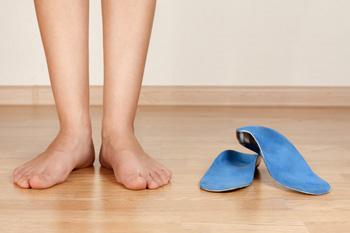 For many people, having flat feet may be a condition that generally causes little or no concern. When this condition occurs, the feet will lay flat on the ground as a result of an absent arch. Research has shown that most babies are born with flat feet, and the arches will typically develop at approximately six years of age. While flat feet or fallen arches do not hinder daily activities for many people, there may be symptoms that may cause discomfort for certain people. These may include the feet feeling stiff or experiencing a numbing sensation. Additionally, some people may have difficulty in balancing or walking, or one foot may possibly be affected. Possible treatment options may include wearing shoes that have a low heel, or using insoles in the shoes, which may offer adequate support. It’s suggested to speak with a podiatrist who can advise you on what the best treatment options are for you.
For many people, having flat feet may be a condition that generally causes little or no concern. When this condition occurs, the feet will lay flat on the ground as a result of an absent arch. Research has shown that most babies are born with flat feet, and the arches will typically develop at approximately six years of age. While flat feet or fallen arches do not hinder daily activities for many people, there may be symptoms that may cause discomfort for certain people. These may include the feet feeling stiff or experiencing a numbing sensation. Additionally, some people may have difficulty in balancing or walking, or one foot may possibly be affected. Possible treatment options may include wearing shoes that have a low heel, or using insoles in the shoes, which may offer adequate support. It’s suggested to speak with a podiatrist who can advise you on what the best treatment options are for you.
Flatfoot is a condition many people suffer from. If you have flat feet, contact one of our podiatrists from Lovely Foot Associates, PC. Our doctors will treat your foot and ankle needs.
What Are Flat Feet?
Flatfoot is a condition in which the arch of the foot is depressed and the sole of the foot is almost completely in contact with the ground. About 20-30% of the population generally has flat feet because their arches never formed during growth.
Conditions & Problems:
Having flat feet makes it difficult to run or walk because of the stress placed on the ankles.
Alignment – The general alignment of your legs can be disrupted, because the ankles move inward which can cause major discomfort.
Knees – If you have complications with your knees, flat feet can be a contributor to arthritis in that area.
Symptoms
Treatment
If you are experiencing pain and stress on the foot you may weaken the posterior tibial tendon, which runs around the inside of the ankle.
If you have any questions please feel free to contact our office located in Johnstown, PA . We offer the newest diagnostic and treatment technologies for all your foot and ankle needs.
Read more about Flat Feet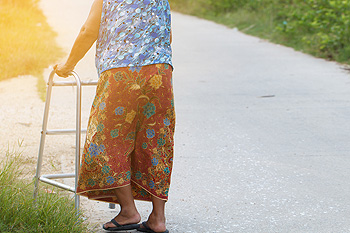 Research has shown that people who are sixty five or older may have an increased risk in falling. As a result, many people have incurred serious injuries. There have been recent studies which cite that when patients partake in a regular exercise program, the chances of falling may decrease. Specific exercises may be introduced to include resistance and strength training, which may increase overall body strength, yoga, which may aid in improving flexibility, and tai chi, which may help to maintain proper balance. Additionally, there have been studies performed that include taking vitamin D supplements for the prevention of falling. However, after much consideration, it has been found that taking this particular supplement has little or no correlation with reducing the risk of falling unless there are medical conditions involved that may include osteoporosis or a vitamin D deficiency.
Research has shown that people who are sixty five or older may have an increased risk in falling. As a result, many people have incurred serious injuries. There have been recent studies which cite that when patients partake in a regular exercise program, the chances of falling may decrease. Specific exercises may be introduced to include resistance and strength training, which may increase overall body strength, yoga, which may aid in improving flexibility, and tai chi, which may help to maintain proper balance. Additionally, there have been studies performed that include taking vitamin D supplements for the prevention of falling. However, after much consideration, it has been found that taking this particular supplement has little or no correlation with reducing the risk of falling unless there are medical conditions involved that may include osteoporosis or a vitamin D deficiency.
Preventing falls among the elderly is very important. If you are older and have fallen or fear that you are prone to falling, consult with one of our podiatrists from Lovely Foot Associates, PC. Our doctors will assess your condition and provide you with quality advice and care.
Every 11 seconds, an elderly American is being treated in an emergency room for a fall related injury. Falls are the leading cause of head and hip injuries for those 65 and older. Due to decreases in strength, balance, senses, and lack of awareness, elderly persons are very susceptible to falling. Thankfully, there are a number of things older persons can do to prevent falls.
How to Prevent Falls
Some effective methods that older persons can do to prevent falls include:
Falling can be a traumatic and embarrassing experience for elderly persons; this can make them less willing to leave the house, and less willing to talk to someone about their fears of falling. Doing such things, however, will increase the likelihood of tripping or losing one’s balance. Knowing the causes of falling and how to prevent them is the best way to mitigate the risk of serious injury.
If you have any questions, please feel free to contact our office located in Johnstown, PA . We offer the newest diagnostic and treatment technologies for all your foot care needs.
Read more about Falls Prevention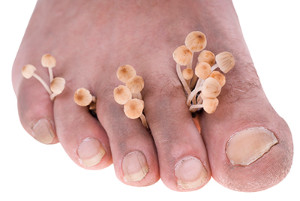 The uncomfortable condition known as Athlete’s foot appears as a rash on the feet that is generally itchy. The medical name for this condition is called tinea pedis and is caused by a fungus that typically thrives in warm and dark areas. There are several symptoms that may be associated with this ailment, including skin that is cracked in between the toes, experiencing a burning sensation or possibly an unpleasant foot odor. Research has shown there may be preventative measures that can be implemented to avoid this condition from developing. These may include washing and drying the feet thoroughly, wearing appropriate shoes while in public showers, pools, and surrounding areas, and choosing to wear shoes and socks that are made of breathable materials. It is advised to speak with a podiatrist if you feel you have Athlete’s foot, so a proper diagnosis can be performed and correct treatment options may be discussed.
The uncomfortable condition known as Athlete’s foot appears as a rash on the feet that is generally itchy. The medical name for this condition is called tinea pedis and is caused by a fungus that typically thrives in warm and dark areas. There are several symptoms that may be associated with this ailment, including skin that is cracked in between the toes, experiencing a burning sensation or possibly an unpleasant foot odor. Research has shown there may be preventative measures that can be implemented to avoid this condition from developing. These may include washing and drying the feet thoroughly, wearing appropriate shoes while in public showers, pools, and surrounding areas, and choosing to wear shoes and socks that are made of breathable materials. It is advised to speak with a podiatrist if you feel you have Athlete’s foot, so a proper diagnosis can be performed and correct treatment options may be discussed.
Athlete’s Foot
Athlete’s foot is often an uncomfortable condition to experience. Thankfully, podiatrists specialize in treating athlete’s foot and offer the best treatment options. If you have any questions about athlete’s foot, consult with one of our podiatrists from Lovely Foot Associates, PC. Our doctors will assess your condition and provide you with quality treatment.
What Is Athlete’s Foot?
Tinea pedis, more commonly known as athlete’s foot, is a non-serious and common fungal infection of the foot. Athlete’s foot is contagious and can be contracted by touching someone who has it or infected surfaces. The most common places contaminated by it are public showers, locker rooms, and swimming pools. Once contracted, it grows on feet that are left inside moist, dark, and warm shoes and socks.
Prevention
The most effective ways to prevent athlete’s foot include:
Symptoms
Athlete’s foot initially occurs as a rash between the toes. However, if left undiagnosed, it can spread to the sides and bottom of the feet, toenails, and if touched by hand, the hands themselves. Symptoms include:
Diagnosis and Treatment
Diagnosis is quick and easy. Skin samples will be taken and either viewed under a microscope or sent to a lab for testing. Sometimes, a podiatrist can diagnose it based on simply looking at it. Once confirmed, treatment options include oral and topical antifungal medications.
If you have any questions, please feel free to contact our office located in Johnstown, PA . We offer the newest diagnostic and treatment technologies for all your foot care needs.